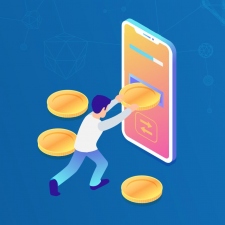
Content monetisation platform Coda and market intelligence platform Niko Partners have released a new report that explores the evolving landscape of the gaming industry, focusing on alternative monetisation strategies and the nascent shift away from primary app stores.
The report highlights the growing importance of digital distribution and monetisation strategies for mobile game publishers. Key findings include the rise of first-party and third-party web stores, offering more versatility and flexibility for selling digital content compared to traditional app stores.
The emergence of web stores
According to the white paper, primary app stores have dominated app discovery and monetisation for over 15 years, but publishers now seek more holistic and wide-reaching strategies. This shift is driven by the desire to provide direct consumer insights and reach diverse markets.
First-party web stores, where publishers sell directly through their websites, and third-party web stores, where partnerships with other digital marketplaces occur, offer lower costs and significant opportunities for monetisation outside traditional app stores.
Monetisation trends in Southeast Asia
Out-of-app monetisation, such as selling directly through web stores, is gaining traction in regions with low credit card access and usage such as Southeast Asia which accounts for 21% of all mobile game revenue, with certain markets like China relying on third-party distribution for 53% of app monetisation.
The report emphasises the need for publishers to adapt their payment options to suit diverse markets, including alternative methods like e-wallets and phone carrier billing, and that alternative monetisation options beyond Google Play and the Apple App Store are gaining attention, but in Asia, first and third-party web stores have been the standard for over a decade.
However, global publishers without localised go-to-market strategies are at a disadvantage, particularly compared to regional publishers with established approaches. The growth of out-of-app monetisation in Asia is accelerated by legislation promoting competition, increased acknowledgement of its benefits, and concerns about high fees imposed by primary app stores for distribution rights.
Lisa Hanson, president and CEO of Niko Partners says, “We need to recognize that purchasing power varies market by market, and that consumers like to have a choice about how they access desired content. Out-of-app monetization helps to unlock revenue in markets where gamers have different options compared to Western markets, from alternative payment methods to tighter budgets for game spending.”
Growth potential in the Southeast Asian games market
The Southeast Asian games market generated $5.8 billion in revenue in 2023, and Coda sees the potential for continued growth by partnering with publishers to expand their global reach. The report goes on to underscore the growth of this market with 286 million mobile gamers in 2023, expected to grow to 326 million in 2027.
However, a significant portion of the adult population (40-50%) remains “unbanked”, yet there are over 100 payment methods and providers in the region, necessitating the incorporation of diverse payment options. The reports suggest that the success of publishers in this region depends on creating compelling marketing activities to convert local gamers into paying users.
Last year, 21% of Southeast Asia’s $3.6 billion mobile games revenue came from web stores and alternative app stores. To leverage this opportunity, the report also urges publishers to collaborate with partners who can provide access to various marketing channels, local expertise, and networks, including influencers and player communities.
Coda and Niko Partner’s report emphasises the gaming industry’s high transition and the growing importance of alternatives for content discovery, distribution, and monetisation. Diversifying strategies outside of primary app stores is deemed essential for publishers looking to tap into the expansive potential of markets like Southeast Asia.